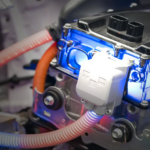Choosing the right PC speed for your needs is crucial to ensure you get the most out of your machine without overspending on unnecessary features. Whether you’re a casual user, a gamer, a creative professional, or someone who needs a PC for work, understanding how much power you actually need can save you time, frustration, and money. In this guide, we’ll explore the key factors that influence PC speed and help you determine the specifications that match your requirements.
1. Understanding PC Speed: What Does It Mean?
PC speed refers to how quickly your computer can perform tasks. This depends on several key components working together:
a. Processor (CPU) Speed
The CPU is the brain of your PC. Its clock speed, measured in GHz, determines how fast it can execute instructions. However, raw speed isn’t everything; the number of cores and threads also plays a vital role in multitasking and running complex applications.
b. RAM (Memory)
Random Access Memory affects how smoothly your PC runs multiple programs simultaneously. More RAM allows for better multitasking and is essential for resource-intensive applications like video editing or gaming.
c. Storage Speed
The type of storage—HDD or SSD—affects how quickly your PC can access and write data. SSDs are significantly faster than traditional HDDs, leading to faster boot times and quicker application loading.
d. Graphics Processing Unit (GPU)
For gamers, designers, and video editors, the GPU is critical. It handles graphics rendering and can significantly impact the speed and quality of visual tasks.
e. Cooling System
An efficient cooling system prevents thermal throttling, ensuring your PC runs at optimal speeds even during heavy usage.
2. Determine Your PC Usage Needs
The speed requirements for your PC depend largely on what you intend to use it for. Let’s break down common user scenarios:
a. Casual Use
If you’re using your PC for browsing the web, checking emails, watching videos, or light office work, you don’t need a high-performance machine. A basic dual-core processor, 8GB of RAM, and an SSD will suffice.
b. Gaming
Gamers require faster PCs to handle modern games with high graphics demands. Look for at least a quad-core processor, 16GB of RAM, and a dedicated GPU like the NVIDIA GeForce RTX or AMD Radeon RX series.
c. Content Creation
For tasks like video editing, 3D rendering, or graphic design, you’ll need a powerful CPU with multiple cores, 32GB (or more) of RAM, and a high-end GPU. Additionally, fast storage and a large SSD will improve your workflow.
d. Professional Workstations
If you’re working with big data, simulations, or virtual machines, a workstation-grade PC with a multi-core CPU (like Intel Xeon or AMD Threadripper), 64GB+ RAM, and enterprise-level SSDs is essential.
3. Core Components to Consider
Each component in your PC contributes to overall speed. Let’s explore what to look for:
a. Processor
- Basic Tasks: Dual-core or low-end quad-core processors like Intel Core i3 or AMD Ryzen 3.
- Mid-range Tasks: Quad-core or six-core processors like Intel Core i5 or AMD Ryzen 5.
- High-performance Tasks: Eight-core or more processors like Intel Core i7/i9 or AMD Ryzen 7/9.
b. RAM
- 8GB: Sufficient for everyday tasks.
- 16GB: Ideal for gaming and moderate multitasking.
- 32GB+: Required for professional applications or heavy multitasking.
c. Storage
- SSD: Prioritize SSDs for faster read/write speeds. Aim for at least 256GB for casual use, 512GB for gaming, and 1TB or more for professional work.
- HDD: Useful for additional storage but slower compared to SSDs.
d. Graphics Card
- Integrated Graphics: Fine for casual use.
- Dedicated Graphics: Essential for gaming and creative tasks. Look for GPUs with higher VRAM for better performance.
4. Balancing Speed and Budget
It’s easy to get caught up in chasing the fastest PC, but not everyone needs the latest high-end specs. Here’s how to strike a balance:
a. Evaluate Your Priorities
Do you need speed for gaming or professional tasks, or are you primarily focused on basic functionality? This will help you allocate your budget effectively.
b. Avoid Overpaying
Don’t pay for high-end components you won’t use. For example, casual users don’t need an expensive GPU, and gamers don’t need workstation-level CPUs.
c. Look for Upgradability
Choose a PC with upgrade potential so you can improve its performance in the future without replacing the entire machine.
5. Benchmarks and Real-World Performance
When comparing PCs, benchmarks are a valuable tool to gauge real-world performance. Look for benchmarks specific to your intended tasks. For example:
- Gaming: Check frames-per-second (FPS) benchmarks for games you play.
- Editing: Look for rendering time benchmarks for software like Adobe Premiere Pro.
- Office Work: General productivity benchmarks like PCMark can help.
6. Future-Proofing Your PC
Technology evolves rapidly, and what’s fast today might feel sluggish in a few years. To future-proof your PC:
- Invest in a slightly better CPU and GPU than you currently need.
- Opt for higher RAM capacity, even if you don’t use it all immediately.
- Choose SSD storage for longevity and speed.
7. The Role of Peripherals
Even the fastest PC can feel slow if paired with poor peripherals. Consider these upgrades:
- Monitors: High refresh rates and resolution enhance your experience.
- Keyboard and Mouse: Ergonomic and responsive options improve productivity.
- External Drives: Fast external SSDs are great for additional storage.
8. Optimize for Performance
Once you’ve built or bought your PC, keep it running efficiently:
- Regular Updates: Keep your operating system and drivers up to date.
- Maintenance: Clean dust from hardware and check for software clutter.
- Cooling: Ensure proper airflow to prevent overheating.
Your PC’s speed should match your needs and usage patterns. By understanding the factors that contribute to performance—such as CPU, RAM, storage, and GPU—you can make an informed decision without overspending. Whether you need a basic PC for everyday tasks or a powerhouse for professional work, the key is to choose a machine that balances speed, functionality, and cost. Remember, the fastest PC isn’t always the best; it’s about finding the right fit for you.





